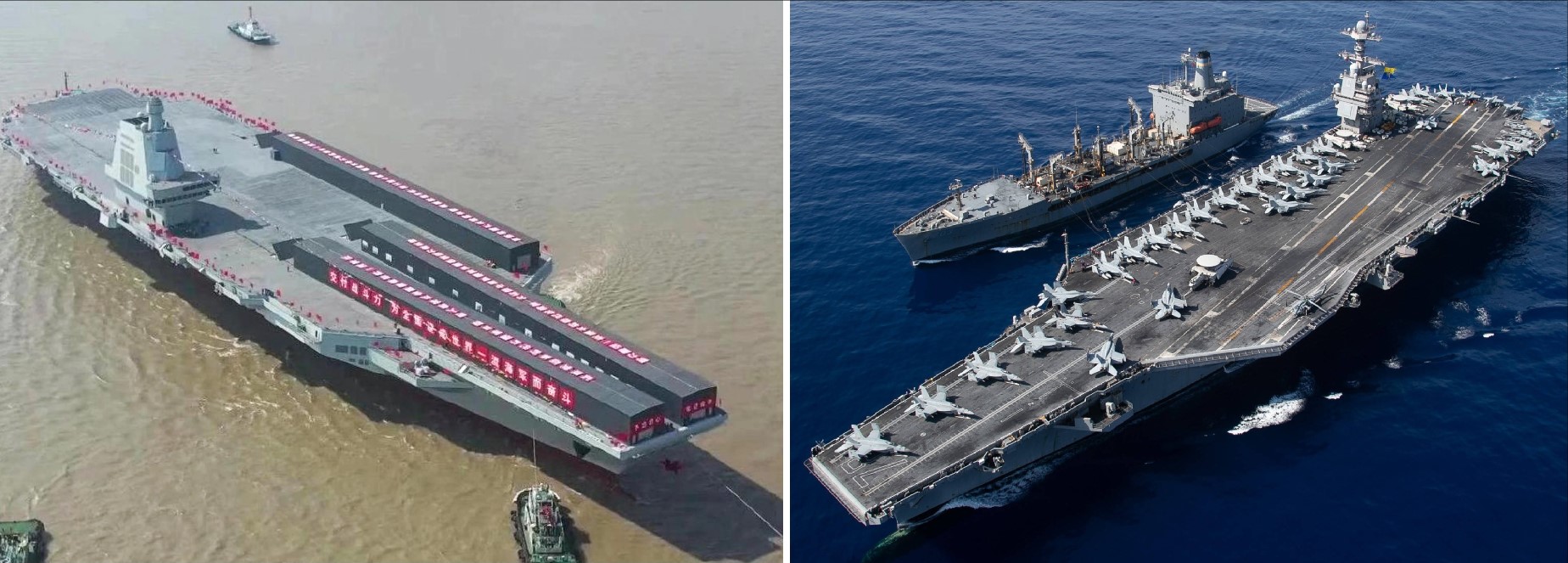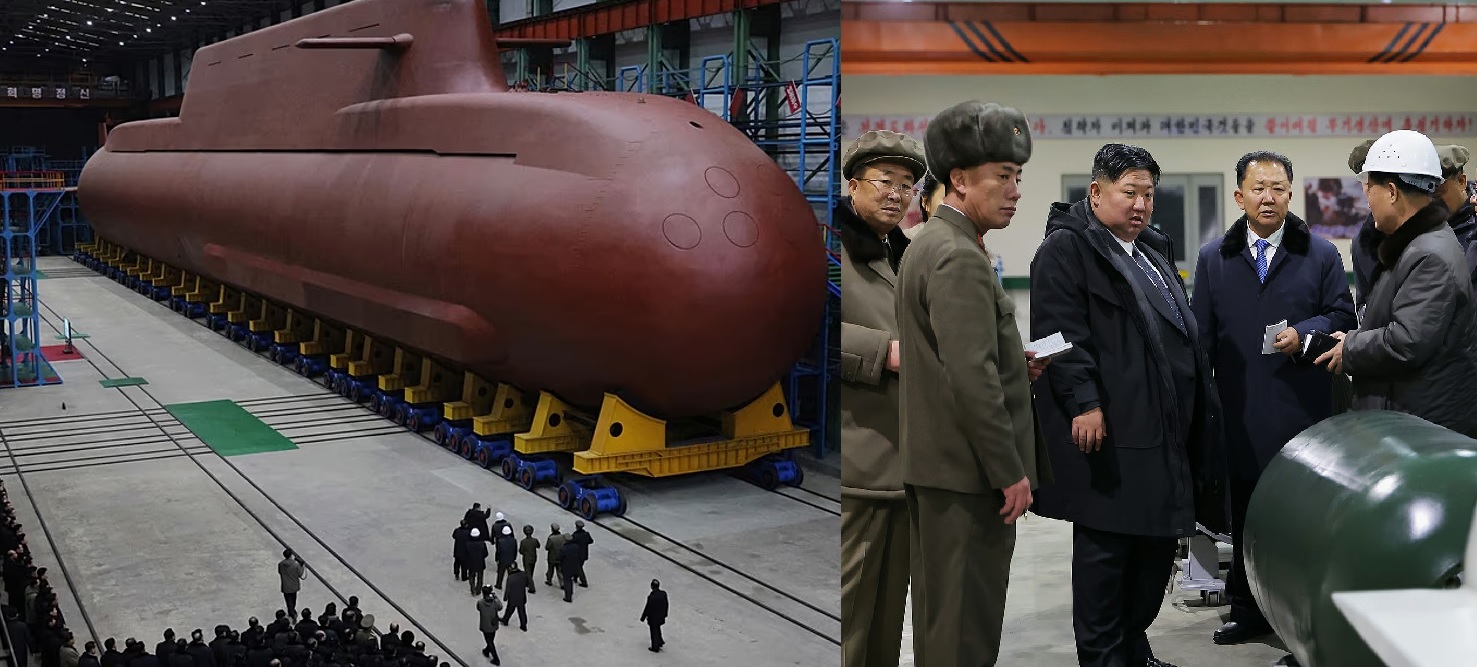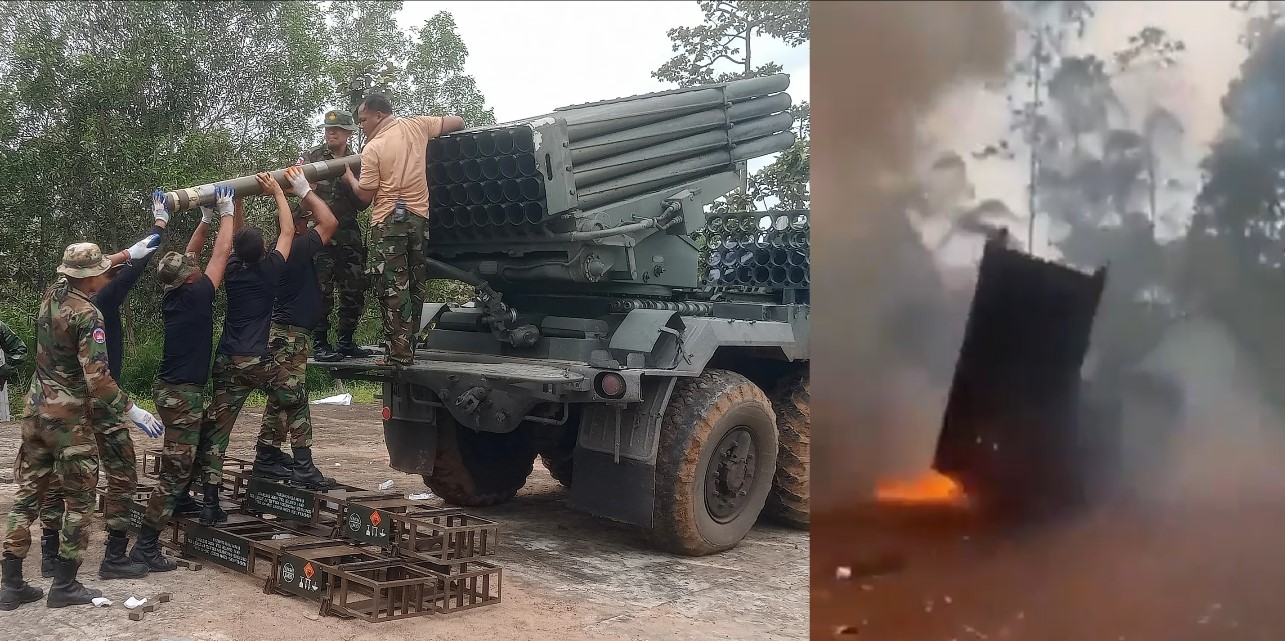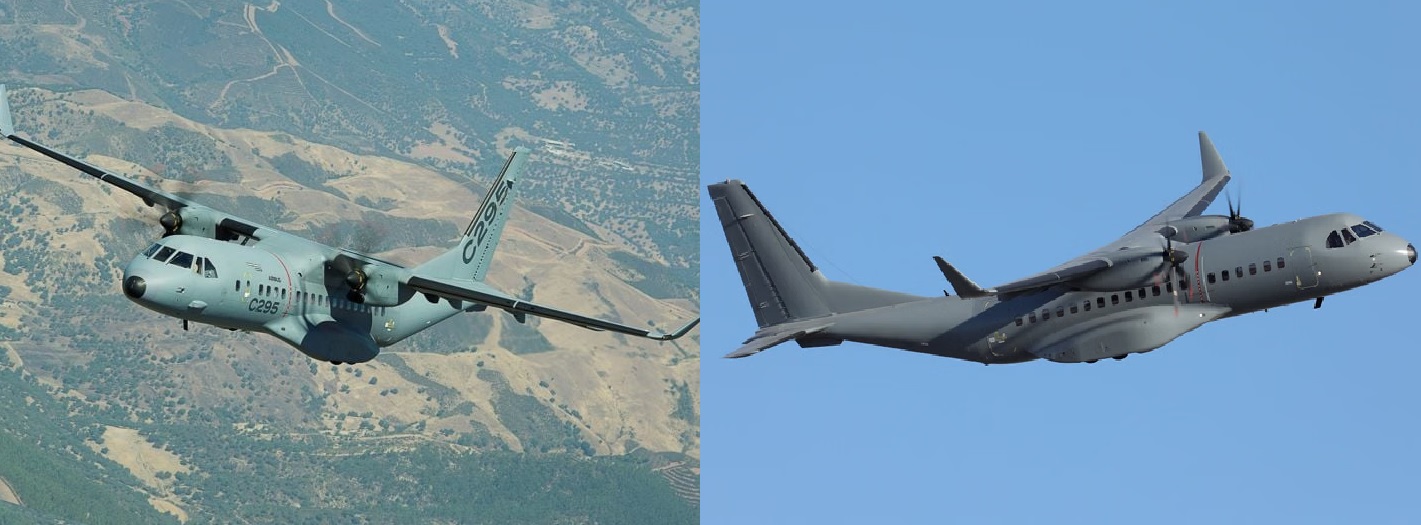USS Gerald R. Ford vs China’s Fujian a Comprehensive Comparison of the World’s Most Advanced Aircraft Carriers

In November 2025, China officially commissioned the Fujian (Type 003) — its first catapult-equipped supercarrier, signaling the most serious challenge yet to U.S. naval dominance. This move comes as the U.S. Navy’s USS Gerald R. Ford (CVN-78), the world’s most advanced nuclear-powered carrier, continues its global operations.
Both ships represent their nations’ peak achievements in naval engineering — yet they are built on vastly different doctrines. The Ford is designed for global power projection and nuclear endurance, while the Fujian is a regional strike platform meant to dominate the Western Pacific and South China Sea.
Below is a deep, technical, and strategic comparison of the two — covering propulsion, sensors, aircraft, catapult systems, automation, and strategic value.
General Design and Dimensions
| Specification | USS Gerald R. Ford (CVN-78) | Fujian (Type 003) |
|---|---|---|
| Country | United States | China |
| Commissioned | 22 July 2017 | 5 November 2025 (reported) |
| Shipyard | Newport News Shipbuilding, Virginia | Jiangnan Shipyard, Shanghai |
| Displacement (full load) | ~100,000 long tons (~112,000 tons) | Estimated 80,000–85,000 tons |
| Length | 1,106 ft (337 m) | ~1,050 ft (316 m, estimated) |
| Beam (Flight Deck Width) | 256 ft (78 m) | ~246 ft (78 m, estimated) |
| Draft | 41 ft (12.5 m) | ~36 ft (11 m, estimated) |
| Hull Material | High-tensile steel with layered armor | Steel with radar-reducing superstructure |
| Island Design | Reduced radar cross-section, smaller island | More compact island, farther aft (for deck efficiency) |
Verdict: The Ford is larger and heavier, offering greater hangar space and aviation fuel capacity. Fujian, while slightly smaller, is comparable in deck area — a feat for China’s first indigenous supercarrier.
Propulsion and Power Systems
| Feature | Ford | Fujian |
|---|---|---|
| Type | Nuclear | Conventional |
| Reactor / Engine Type | 2 × A1B nuclear reactors, 4 shafts | Conventional steam turbines (possibly gas-steam hybrid), 8 boilers (speculated) |
| Power Output | ~700 MW total electrical power | ~150–200 MW estimated electrical output |
| Speed | 30+ knots | 30 knots (estimated) |
| Range | Unlimited (nuclear) | ~10,000–12,000 nautical miles (before refueling) |
| Endurance | 25+ years before reactor refueling | Limited by fuel logistics (~45–60 days without replenishment) |
Verdict: Nuclear propulsion gives the Ford unmatched endurance and power for energy-intensive systems (EMALS, radars, directed-energy weapons). Fujian’s conventional plant limits its operational range, tying it closer to home waters and supply lines.
Launch and Recovery Systems
| System | Ford | Fujian |
|---|---|---|
| Launch System | EMALS (Electromagnetic Aircraft Launch System) — 4 catapults | Electromagnetic Catapult System (Type-003 EM system) — 3 catapults |
| Arresting Gear | Advanced Arresting Gear (AAG) | PLAN Electro-hydraulic Arresting Gear |
| Launch Rate | ~160 sorties/day nominal; 270 in surge | Estimated 120–150 sorties/day (early projections) |
| Launch Energy Control | Fly-by-wire digital modulation | Similar concept using power storage banks (MVDC) |
| Launch Compatibility | Supports F-35C, UAVs, AEW aircraft | Supports J-15T, J-35, KJ-600, drones (future UCAVs) |
Verdict: Both carriers use electromagnetic catapults — a rare technological parity. The Ford’s EMALS is combat-proven; Fujian’s version is new and untested but reflects major progress in Chinese naval engineering.
Aircraft Capacity and Composition
| Category | Ford | Fujian |
|---|---|---|
| Aircraft Capacity | 75–90 aircraft | 60–70 aircraft |
| Fighter Aircraft | F/A-18E/F Super Hornet, F-35C Lightning II | J-15T (Flanker-based), J-35 (stealth fighter) |
| AEW Aircraft | E-2D Advanced Hawkeye | KJ-600 (AEW&C aircraft) |
| Electronic Warfare (EW) | EA-18G Growler | J-15DT EW variant (planned) |
| UAV Integration | MQ-25 Stingray (tanker), MQ-9 naval variant | GJ-11 Sharp Sword (stealth UCAV, test phase) |
| Helicopters | MH-60R/S Seahawk | Z-20 and Z-18 ASW/utility |
| Sortie Rate | ~160–270 per day | 120–150 per day (estimated) |
| Deck Elevators | 3 advanced electromagnetic elevators | 2 traditional elevators |
Verdict: The Ford’s air wing is larger, more diverse, and fully fifth-generation integrated. Fujian’s air wing is smaller but introduces new AEW and stealth fighters — transforming China’s naval aviation.
Sensors, Radar, and Combat Systems
| System | Ford | Fujian |
|---|---|---|
| Primary Radar | Dual Band Radar (DBR): X- and S-band AESA arrays | Type 346B AESA (same family as on Type-055 destroyers) |
| Combat System | Aegis-like Ship Self-Defense System (SSDS) Mk2 | PLAN Integrated Combat System (ICS, based on Type-055 network) |
| Data Links | Link 16, CEC, NIFC-CA | Beidou-based network, datalink with Type-055s & AEW aircraft |
| Electronic Warfare Suite | AN/SLQ-32(V)7 SEWIP | Indigenous ECM/ECCM suite, details classified |
| Self-Defense Missiles | ESSM, RIM-116 RAM, Phalanx CIWS | HQ-10 SAMs, Type 1130 CIWS |
| Decoys / Jammers | Nulka, SRBOC, SLQ-32 | Chaff/flare dispensers, electronic jammers |
Verdict: The Ford has a broader, more integrated C4ISR network and proven radar systems. Fujian’s sensors rival top-tier destroyers, but full fleet data integration remains under development.
Crew, Automation, and Maintenance
| Feature | Ford | Fujian |
|---|---|---|
| Crew (ship + air wing) | ~4,500 | ~2,500–2,800 (estimated) |
| Automation Level | Highly automated — 25% reduction in manpower vs Nimitz | Moderate automation, less advanced software control |
| Weapons Elevators | 11 advanced electromagnetic elevators | 8 hydraulic elevators (estimated) |
| Maintenance Intervals | 12 years between major overhauls | Regular drydock after 5–7 years (fuel-dependent) |
Verdict: Ford’s automation cuts crew size and boosts efficiency. Fujian’s systems are more conventional, but China has made major strides in maintenance design.
Strategic Role and Doctrine
| Strategic Focus | Ford | Fujian |
|---|---|---|
| Operational Range | Global — Atlantic, Pacific, Indian Oceans | Regional — South China Sea, Taiwan Strait, Indian Ocean |
| Power Projection | Blue-water dominance and deterrence | Regional sea control and anti-access area denial (A2/AD) |
| Carrier Strike Group Support | 1 cruiser + 2–3 destroyers + submarines + supply ships | 1–2 Type-055 cruisers + 2–3 Type-052D destroyers + logistics ships |
| Allied Infrastructure | Global (NATO, Indo-Pacific, CENTCOM bases) | Regional (Djibouti, Gwadar, and home ports) |
| Doctrinal Purpose | Global response, deterrence, crisis management | Strategic deterrence, Taiwan contingency, regional control |
Verdict: The Ford is designed to project power worldwide; Fujian is built to dominate Asia’s maritime periphery.
Network Warfare and Future Integration
-
Ford integrates with F-35C’s sensor fusion, E-2D Hawkeye’s networked battlespace management, and U.S. satellites, forming the backbone of NIFC-CA (Naval Integrated Fire Control - Counter Air) — allowing cross-domain target sharing between ships, aircraft, and land units.
-
Fujian will link with KJ-600 AEW aircraft, Type-055 cruisers, and China’s Beidou navigation satellites, forming the PLAN’s first carrier-centric battle network. Integration remains under development, but China is rapidly improving its C4ISR architecture.
Strategic Implications
For the United States:
The Ford symbolizes unrivaled global reach — able to sustain combat operations thousands of miles from home, support expeditionary forces, and deploy carrier strike groups on demand. Its nuclear endurance, automated systems, and combat-proven fleet structure keep the U.S. far ahead in operational readiness.
For China:
The Fujian marks China’s arrival as a true blue-water navy. Its CATOBAR system enables modern carrier aviation — a critical step toward competing with Western navies. While it cannot match Ford’s global endurance, it makes China regionally dominant across Asia-Pacific waters.
With Fujian, the PLAN can now project power beyond the first island chain, maintain persistent air coverage, and challenge U.S. naval supremacy near its maritime frontiers.
Strengths and Weaknesses
| Aspect | Ford Advantage | Fujian Advantage |
|---|---|---|
| Propulsion | Nuclear, unlimited endurance | Simpler maintenance, lower cost |
| Aircraft Capacity | 75–90 aircraft | New stealth fighters (J-35) and AEW capability |
| Sortie Generation | Highest in the world (160–270/day) | Still developing but revolutionary for China |
| Sensors / Network | Global combat integration (CEC, Link 16) | Integrated with regional PLAN assets |
| Strategic Range | Global blue-water | Regional A2/AD environment |
| Combat Experience | 80 years of carrier doctrine | Rapidly improving, still learning |
| Cost | $13 billion (CVN-78) | Estimated $8–9 billion (Fujian) |
Conclusion
The USS Gerald R. Ford remains the benchmark for carrier dominance — unmatched in endurance, combat integration, and global reach. Its nuclear propulsion, automated systems, and fifth-generation air wing keep it far ahead in sustained power projection.
However, China’s Fujian is a technological milestone. It elevates the PLAN from a regional force to a near-peer navy capable of operating CATOBAR carriers, electromagnetic launch systems, and stealth air wings.
While Fujian cannot yet equal the Ford in endurance or experience, its emergence closes the capability gap faster than many predicted.
Together, these carriers represent a new era of competition:
Ford — the standard of global dominance.
Fujian — the symbol of China’s rise as a maritime power.
Both will define 21st-century naval warfare — not through size alone, but through technology, integration, and strategy.
✍️ This article is written by the team of The Defense News.
Top 3 Latest Posts
Leave a Comment: Don't Wast Time to Posting URLs in Comment Box
2025-11-10 02:20:26
The Chinese have a secret weapon. It's called the Democrat Party.






